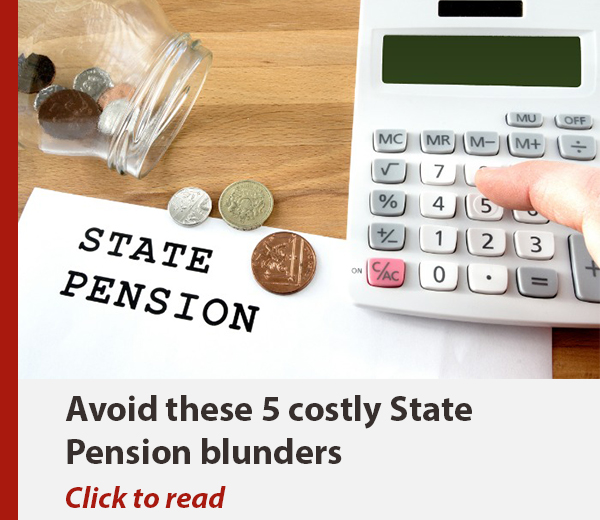Marriage Allowance: pensioners face a surprise tax bill

Making use of the Marriage Allowance can save you money, but thousands face a surprise tax demand.
The Marriage Allowance is supposed to be a bit of a financial boost for those who have tied the knot.
However, it has now emerged that thousands of older couples who have taken advantage of the tax perk may face a surprise tax bill in future.
And it’s all down to decisions made by the Chancellor at the Autumn Statement last week.
How does the Marriage Allowance work?
The Marriage Allowance is a tax break offered to those who are married or in a civil partnership.
The idea is that you can transfer some of your unused Personal Allowance to your higher-earning partner.
The Personal Allowance is how much you can earn each year before you start paying tax on your income, and currently stands at £12,570.
If you aren’t using all of your Personal Allowance ‒ perhaps you don’t work or only have a modest income ‒ then you can transfer up to £1,260 of that allowance to your partner.
As a result, the higher-earning partner will see their Personal Allowance move to as much as £13,830, which could mean they pay up to £252 less Income Tax per year.
There is something of a catch though in that the higher-earning partner must be a basic rate taxpayer.
If they earn above £50,270, and so fall into the higher rate tax bracket, then you cannot take advantage of the Marriage Allowance.
Why pensioners could face a tax shock
The Marriage Allowance is not limited solely to those of working age.
If you are a pensioner, and your partner has a more sizeable pension income than you ‒ albeit still within the threshold of the basic rate tax bracket ‒ then you could look to make use of this particular tax break.
And it’s people in this position who could now face a surprise tax bill, according to warnings from Steve Webb, the former pensions minister.
Webb, who is now partner at pensions consultancy LCP, noted that the person handing over 10% of their allowance will have their own Personal Allowance of £11,310.
However, the State Pension is now due to hit around £11,542 next year, courtesy of an 8.5% hike in payments as a result of the triple lock.
Given this, the lower-earning partner will then be hit with a surprise tax bill on the difference.
As Webb points out, couples in this position will have two options ‒ either carry on with the allowance, and pay this tax each year, or dump claiming the allowance altogether and potentially be left worse off overall.
He cautioned that thousands face “Marriage Allowance mayhem” as a result of the situation.
It’s yet another complication that older couples don’t really need at this point, and it is not like only small numbers will be impacted.
Around a third of the 2.1 million couples claiming the Marriage Allowance are believed to be pensioners, meaning hundreds of thousands of pensioners are facing the prospect of a surprise tax bill.
I wasn’t expecting a tax bill
It’s not the first time that pensioners have been warned about the prospect of an unexpected tax notice in recent months, either.
As we highlighted back in September, the beefy increase to the State Pension from next April will have tax implications for thousands of older people, even if they aren’t utilising the Marriage Allowance.
While the new level of the State Pension is below the normal level of the Personal Allowance, the difference will be far smaller.
As a result pensioners who have a small additional income from a personal pension, on top of what they receive from the State, may now have to pay tax on their earnings.
To make it even worse, there have been cases where the taxman is actively making it harder for these pensioners to actually pay the tax they owe.
The Personal Allowance freeze
The Personal Allowance is one of the tax thresholds which have been frozen by Jeremy Hunt, the Chancellor of the Exchequer, until 2028.
It’s effectively a stealth tax, since increases to our incomes over time mean more and more of us move into higher Income Tax bands, generating a bigger income for the Treasury without the need to actively increase tax rates.
It’s proving enormously effective too ‒ the Office for Budget Responsibility reckons that by 2028-29 around four million additional people will be dragged into paying tax on their incomes, including plenty of pensioners falling foul of the unmoving Personal Allowance.
That works out to an 11% jump in the number of Basic Rate taxpayers, a staggering growth in such a short time period.
The reality is that more and more people are going to find themselves falling foul of things like the Marriage Allowance limits simply because the Personal Allowance is being kept at its current level for such an extended period of time.
While the appeal to the Treasury is obvious, in truth it’s going to lead to a lot of stress and unnecessary admin for thousands if not millions of ordinary people.
Comments
Be the first to comment
Do you want to comment on this article? You need to be signed in for this feature
